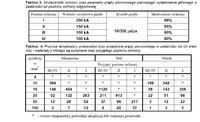WojcikW wrote: I even think that the foundation earth electrode is not suitable as an earth electrode for a lightning protection system. Anyone who has not seen a chimney blown apart by lightning and electrical installation not connected anywhere, torn out of the plaster, is not aware of the forces to which the foundation will be subjected in the event of a lightning strike.
First of all - the chimney is not reinforced concrete with earthing elements embedded in it. Secondly, the plaster covering the installation is also not concrete, and the installation is not an earth electrode. In both cases, it is necessary to ensure that the discharge current does not flow there.
And thirdly - when comparing the ring earth electrode with the foundation earth electrode, it is worth looking at the durability of both. Have you ever dug up an earth electrode placed in the ground, e.g. 50 years ago? Have you forged reinforced concrete made at a similar time? Of course, concrete, not a "concrete-like product".
Did you see the difference? If not, I'll give you a hint - rods and hoop irons pulled out of the ground are in the middle of the cross-section or more, it's just rust, most of it broke off when trying to pull it out by force.
Meanwhile, bars forged from concrete have a cross-section and surface in the same condition as they left the steelworks. Plain bare rods, no zinc plating, no stainless steel, no duperels... Well, even that specific slightly bluish color was preserved!
Now show me the superiority of the rim over the foundation in the next 50 years and what will happen to them when discharging the discharge current.



